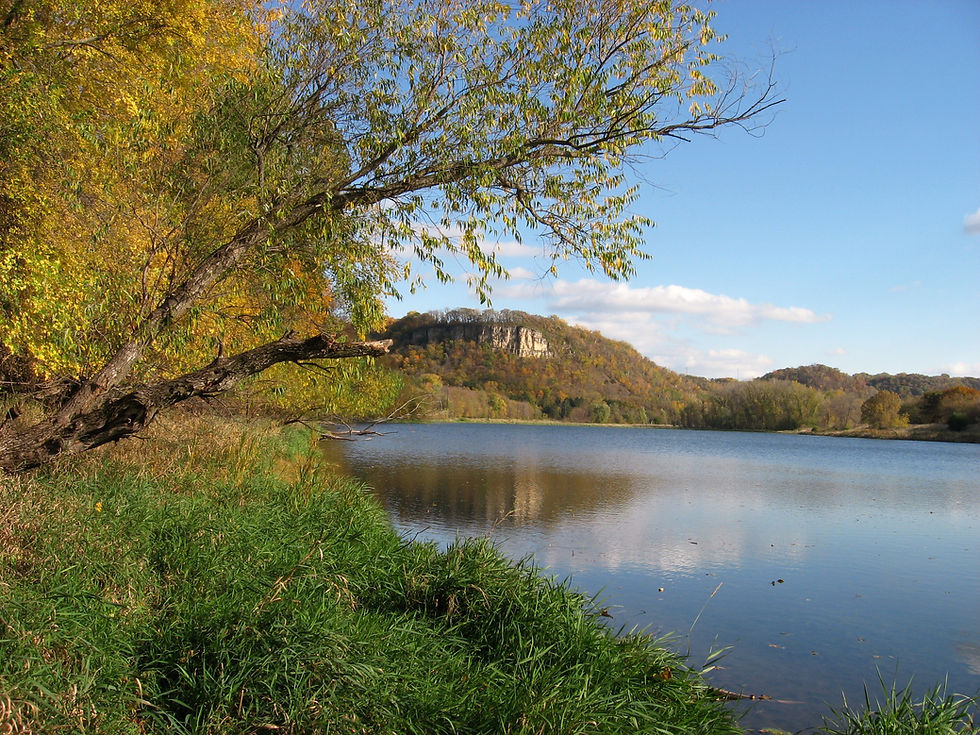Past Peak Color
- Bruce Ause
- Nov 1, 2016
- 2 min read

View of lower Wacouta from the bluff top looking east
Peak color in the Wacouta area was on or around October 19th when this photo was taken. Most of the red/brown foliage in this photo can be attributed to the numerous red and white oaks in our area. Many of these oaks will retain their leaves well into the heart of the winter. In fact, one of the first signs of spring is when these oaks start to drop their leaves.

Rattlesnake Bluff Trail
As of October 30th, the most predominant colors along the Rattlesnake Bluff trail are the reds from the oaks and green from the dense understory of invasive buckthorn. An easy way to distinguish buckthorn from other shrubs this late in the year is that their leaves remain green well into December. I have observed deer during hunting season walking through the forest stopping to browse upon the green leaves of this unwanted invasive.

Buckthorn Berries
Buckthorn shrubs imported from Europe for ornamental purposes are very prolific when it comes to berry production. The scientific name for buckthorn is cathartica (to purge) which helps to explain why birds are the major vehicle for dispersing these abundant seeds.

Goldenrod gone to seed
On October 18th, the flowers of goldenrods had gone to seed and provided a beautiful contrast to the numerous colors of the fall season.

Goldenrod gall
Now at the end of October as the foliage on the goldenrod is turning brown and drying up, galls are becoming much easier to observe. These galls provide living quarters the larva of the goldenrod gall-fly during late summer, fall and winter.

Downy Woodpecker activity
The goldenrod gall-fly larva will emerge as an adult in the spring provided they aren't discovered and eaten by downy woodpeckers.

Dark eyed junco
Despite the fact that we are still waiting for our first killing frost of the season, we have started our winter bird feeding activity in earnest. The first migratory birds to arrive at the feeding station were the ground feeding dark eyed juncos sometimes called "snowbirds". Waves of these winter birds began showing up a couple weeks ago and are feasting on the safflower seeds we provide.

Red-Bellied Woodpecker
One of the first birds to take advantage of our suet feeder were the red-bellied woodpeckers If you look closely, you should be able to detect a slight streak of red down the middle of the breast of this bird--hence the name red-bellied.
.




Comments